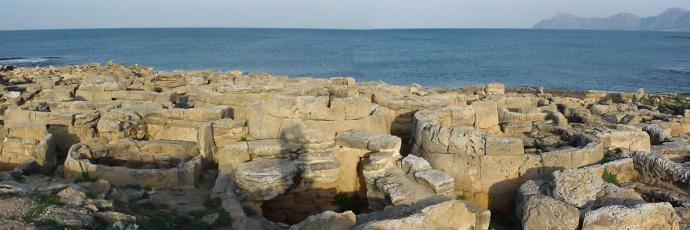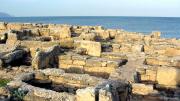Ca'n Picafort:
NECROPOLIS OF
SON REAL
The necropolis (town of the dead) of Son Real, together with the tombs on the nearby islet of Illa des Porros, is certainly one of the most spectacular archaeological sites in Mallorca. It is east of Ca'n Picafort directly on the coast. To reach it, I walked about 1.2 kilometers along the beach from the Hotel Son Bauló.SON REAL
Although Mallorca was dotted with Talaiotic settlements, almost no tombs have been found. Except for this site that once served as a large graveyard. The tombs were built in the form of scaled-down talaiots and navetas, the dwellings of the time. The idea suggests itself that in this way the dead should continue to live in their usual house.
(The poor image quality is due to my Sony Mavica camera, which was the most advanced model in 2002 with 1.3 megapixels.)
The beginning of the use of this site as a burial ground is assumed to be between the 7th and 4th century BC. The origin of those buried here is unclear, as no associated settlement has been found to date. The assumption that these were Phoenician graves has now been ruled out. Finds from the graves of Son Real are exhibited in the "Monographic Museum of Poŀlèntia" (Museu monogràfic de Poŀlèntia) in Alcúdia.
Weapons, jewelery and everyday objects were found as grave goods. Two skulls with clear traces of surgical interventions attracted attention. They bore signs of a circular, centimeter-sized opening, which the victim must have survived because it had grown back. Skull drilling is one of the oldest methods of surgery and was also used by Greeks and Romans.
Currently, there are still 73 graves that defy the waves directly on the shore. In addition to severe winter storms, young hooligans and enduro riders used to ensure that more and more of this ancient place of worship, which has survived for almost three thousand years, is constantly being destroyed. In the meantime, however, the site has been surrounded by a fence.






